
Allan Ramsay was a prominent Scottish portrait-painter.

Sir Anthony van Dyck was a Flemish Baroque artist who became the leading court painter in England after success in the Spanish Netherlands and Italy.
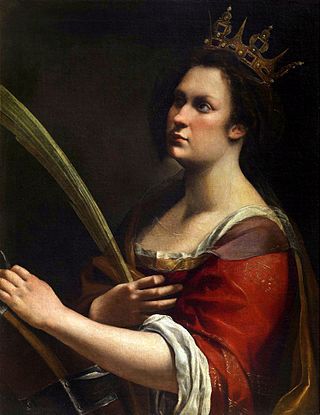
In art history, "Old Master" refers to any painter of skill who worked in Europe before about 1800, or a painting by such an artist. An "old master print" is an original print made by an artist in the same period. The term "old master drawing" is used in the same way.
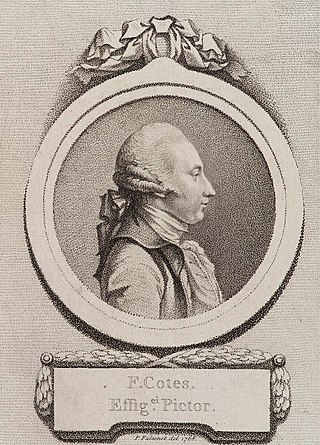
Francis Cotes was an English portrait painter, one of the pioneers of English pastel painting, and a founding member of the Royal Academy in 1768.

Drapery is a general word referring to cloths or textiles. It may refer to cloth used for decorative purposes – such as around windows – or to the trade of retailing cloth, originally mostly for clothing, formerly conducted by drapers.

Thomas Hudson was an English painter, almost exclusively of portraits.
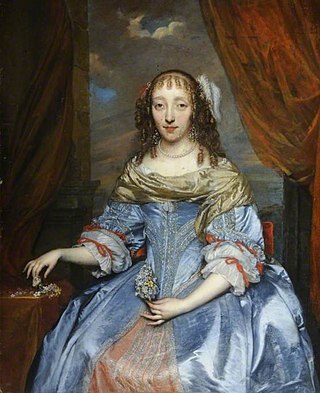
Gonzales Coques was a Flemish painter of portraits and history paintings. Because of his artistic proximity to and emulation with Anthony van Dyck he received the nickname de kleine van Dyck. Coques also worked as an art dealer.

Caterina or Catharina van Hemessen was a Flemish Renaissance painter. She is the earliest female Flemish painter for whom there is verifiable extant work. She is mainly known for a series of small-scale female portraits completed between the late 1540s and early 1550s and a few religious compositions.
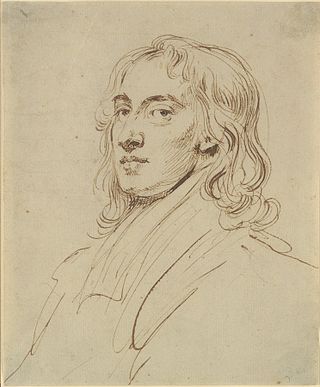
John Vanderbank was an English painter who enjoyed a high reputation during the last decade of King George I's reign and remained in high fashion in the first decade of King George II's reign. George Vertue's opinion was that only intemperance and extravagance prevented Vanderbank from being the greatest portraitist of his generation, his lifestyle bringing him into repeated financial difficulties and leading to an early death at the age of only 45.

Theodoor Rombouts was a Flemish painter who is mainly known for his Caravaggesque genre scenes depicting lively dramatic gatherings as well as religiously-themed works. He is considered to be the primary and most original representative of Flemish Caravaggism. These Caravaggisti were part of an international movement of European artists who interpreted the work of Caravaggio and the followers of Caravaggio in a personal manner.

Simon de Vos was a Flemish painter, draughtsman and art collector. He started his career making small-format cabinet pictures of genre scenes, in particular of Caravaggesque merry companies. Later he switched to history painting, working on larger formats in a Flemish Baroque style which was influenced by Rubens and van Dyck.

Flemish Baroque painting was a style of painting in the Southern Netherlands during Spanish control in the 16th and 17th centuries. The period roughly begins when the Dutch Republic was split from the Habsburg Spain regions to the south with the Spanish recapturing of Antwerp in 1585 and goes until about 1700, when Spanish Habsburg authority ended with the death of King Charles II. Antwerp, home to the prominent artists Peter Paul Rubens, Anthony van Dyck, and Jacob Jordaens, was the artistic nexus, while other notable cities include Brussels and Ghent.
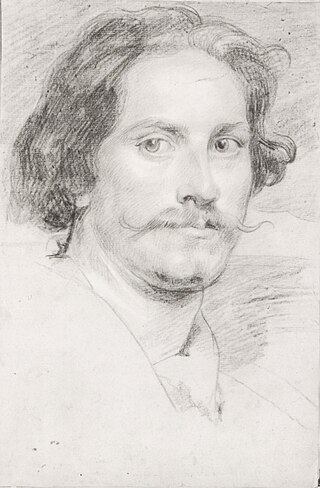
Jan Boeckhorst or Johann Bockhorst was a German-born Flemish Baroque painter and draughtsman who worked most of his career in Antwerp. He was a versatile artist who produced history paintings, genre scenes and portraits in a style influenced by the trio of leading Antwerp painters Peter Paul Rubens, Anthony van Dyck and Jacob Jordaens. Boeckhorst also worked as a designer of cartoons for tapestries.
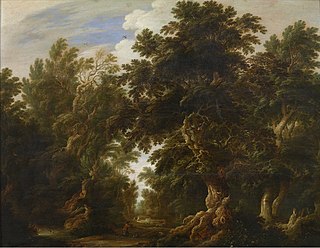
Alexander Keirincx was a Flemish landscape painter who is known for his wooded landscapes with figures as well as his 'portraits' of English castles and country houses. After training in his native Antwerp, he worked in Utrecht and ultimately to Amsterdam in the Dutch Republic. During a period of sojourn in England in the late 1630s he worked on commissions for the English king. He was a regular collaborator of Cornelis van Poelenburch.

George Knapton (1698–1778) was an English portrait painter and the first portraitist for the Society of Dilettanti in the 1740s. He became Surveyor and Keeper of the King's Pictures from 1765 to 1778.

Josef van Aken, known in England as Joseph van Aken and Joseph Van Aken of Heacken was a Flemish genre, portrait and drapery painter who spent most of his career in England. Initially successful in England with his fashionable conversation pieces and other genre scenes, he gradually specialised as a drapery painter. Drapery painters were specialist painters who completed the dress, costumes and other accessories worn by the subjects of portrait paintings. They worked for portrait painters with a large clientele. He was recognised as one of the foremost drapery painters active in mid-18th-century England and was employed in that capacity by many leading and lesser known portrait painters of his time.
Simon Du Bois or Dubois ), was a portrait painter, of Flemish or Dutch origin, active in England from 1685 until his death.

Hamlet Winstanley (1698–1756) was an English painter, engraver and art agent. As a painter, he was mainly active as a portraitist and copyist.

Peter Toms RA was an English portrait and drapery painter, i.e. a painter specialising in depicting drapery for the works of other artists. He was a founding member of the Royal Academy. He was also the Portcullis Pursuivant at the College of Heralds.

Gaspar van der Hagen or Gaspar Vanderhagen was a Flemish sculptor and ivory carver. It is possible he should be identified with the ivory carver signing his works with the monogram G. VDR. He is only known for his work created during his stay in England where he was an assistant in the workshop of the prominent Flemish sculptor John Michael Rysbrack. He is known for his portrait busts and portrait medals carved in ivory.




















